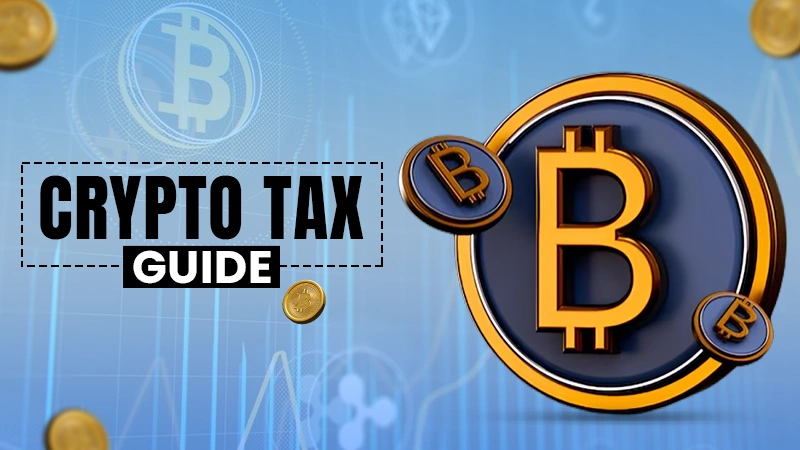Hey, it’s 2024 and by now we’re all too familiar with the concept of cryptocurrency.
These digital decentralized currencies are all the rage these days.
And with their prices soaring so high, everybody and their grandma want to get their hands on some.
But it’s not that easy.
Before you even step foot into the world of cryptocurrency, you need a way to interact, buy, sell, and hold cryptocurrencies in your hands.
The answer to this lies with crypto wallets.
After all, every currency needs a wallet to store it, right?
So, what exactly is a crypto wallet and how can it be useful to us?
In this blog post, we will explore the world of crypto wallets.
We will get to know what they are, how they can be useful, and how you can set up one, as well as the safest crypto wallet app for storing your crypto.
What is a Crypto Wallet?
We all know that cryptocurrencies are decentralized digital forms of currency and they pretty much exist solely on the blockchain.
This means that there is no physical way to get hold of them.
But people still need a way to experience true ownership of these assets and know how much they own.
Crypto wallets are basically a one-stop shop for most of your crypto needs.
You can buy, store, sell, and transact with your crypto all in one place.
They basically act as your gateway to connect with the blockchain.
A crypto wallet basically just needs to store two keys to act as a proper wallet.
Public Key:
This key acts as a public address that can be shared with other people.
You use this address to receive your crypto.
Private Key
This allows you to unlock your wallet and check on your assets and balances.
This key should only known to you and you should not share it with anyone.
DID YOU KNOW?
Blockchain.com reported having around 85 million blockchain wallet users worldwide in 2024.
But Why Do You Actually Need Crypto Wallets?
Just like it is with your money, cryptocurrency can also be collected and used for a ton of reasons.
- Managing Your Crypto: These wallets allow you to keep track of and check the balance of all the assets you own.
- Transactions: You can use wallets to send and receive payments.
- Connect to Decentralized Apps (dApps): With so many apps and services coming with Web 3.0, you need a wallet to access these services.
- Unique Identities: All the cryptos are stored on the blockchain and you can use your unique name and a private encryption key to initiate a transaction.
- NFTs: These wallets can also be used to store and transfer NFTs.
Different Types of Crypto Wallets
You know, there are many different types of crypto wallets that allow you to store and interact with cryptocurrencies with ease.
There are basically two main types of crypto wallets, with different wallets for different purposes.
- Cold Wallet: These are the physical devices that come in the form of a USB stick or a paper wallet.
- Hot Wallet: These are user-friendly mobile or website wallets that can be used for your daily transactions.
While you can access your crypto with these wallets, how they actually work is another story.
How Do Crypto Wallets Work?
Did you know that despite all the features it gives you access to, it does not actually store any of your coins and tokens within it?
So, where exactly is your crypto at then?
Crypto wallets digitally store both the private and public keys that work as digital signatures to authorize transactions.
So, if you want to transfer your crypto to another wallet, you need to enter the public wallet of the recipient and choose the amount you want to send.
And the other side needs to have at least some crypto already in their wallet to support the gas to receive the funds.
After the transaction is done, your wallet allows you to check the balance by using your private key.
Custodial vs. Non-Custodial Wallets
While from a physical and functional standpoint, you can differentiate your wallets into two different types, there is another categorization that you might have heard of.
Some crypto wallets are custodial and some might be non-custodial.
For non-custodial wallets, the user is responsible for keeping their private keys and they have full control of their wallets.
On the flip side, custodial wallets are beginner-friendly but the level of control the users get is pretty limited.
Which Crypto Wallets are the Safest Option?
You might be thinking that using cold wallets is the safest option, as they give you a physical, tangible way to connect with your assets.
There are some things that might make you change your mind.
Just think about it, how many times have you lost a memory card or a USB stick with your documents and baby pictures?
These physical wallets are no different.
And, while cold wallets can easily be the safest form of storage for your crypto, they are not immortal.
Any electronic failure, or damage to the device and poof, all your Bitcoin goes down the drain.
So yes, hot wallets might seem like the less secure option, but wallet companies work their butts off to keep your crypto and their wallets secure from any cyber threats.
Besides, if you can trust your banking apps right, hot wallets managed by crypto exchanges have sometimes similar or even better security.
How To Setup a Crypto Wallet
A crypto wallet is a safe place where you can store your crypto.
There are many different types of wallets and the most popular ones are hosted, non-custodial, and hardware wallets.
Hosted Wallets
These are the custodial kinds of wallets that are mainly set up by exchanges.
So, when you buy crypto using a crypto exchange app, your crypto is automatically stored in a hosted wallet.
So, how do you set up a custodial wallet:
1. Just sign up with an exchange that has its own wallet and create your account.
2. Write down the private key and keep it in a safe place.
3. Buy any crypto from the platform or transfer it to this wallet.
Hardware Wallets
They are the physical devices that let you store your crypto in a physical device.
Here’s how you can set up a hardware wallet:
1. Buy a physical wallet like Ledger or Trezor from the internet.
2. Once you have the device in your hands, download the respective software on your PC from the wallet’s official site.
3. Connect to an exchange that supports the wallet, then transfer your crypto to the wallet. You can expect some slippage or gas fees as you’ll be transferring your assets from one wallet to another.
Non-Custodial Wallets
They are software, either on websites or as phone apps, that lets you have full control over your wallet.
Here’s how you can set up a non-custodial wallet on your phone or website.
1. Install the app on your phone or access the site and register to create an account.
2. Write down and save the private key somewhere.
3. You can now transfer or buy crypto in your wallet.

The global crypto wallet market size was estimated at USD 8.42 billion in 2022 and is expected to grow at a compound annual growth rate (CAGR) of 24.8% from 2023 to 2030.
Conclusion
Crypto wallets are the gateways that can connect you to the amazing and wondrous world of cryptocurrency.
These wallets also facilitate transactions and allow you to buy, sell, and store cryptos in your wallet account.
They also act like bank accounts that let you see which assets you have and how much you have.
But, before you dive head first into picking a crypto wallet, you need to understand what these wallets are and their different types so that you can choose the best and safest option for you.






